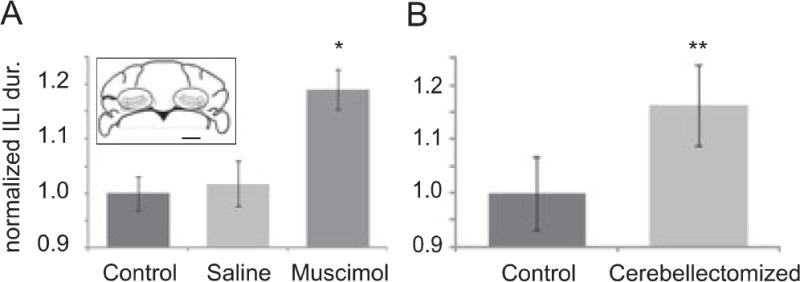Figure 7.

Loss of cerebellar function significantly slows the licking rhythm. (A) Average lick interval durations increase significantly following bilateral microinjections of muscimol into the cerebellar nuclei compared to pre-treatment values and to control conditions involving bilateral injections of saline (n = 9). ILI values are normalized to the pre-treatment values. Error bars depict standard error and the asterisk statistical significance at P < 0.05. The inset shows a line drawing of a coronal section of the mouse cerebellum at 6 mm posterior to bregma, where injections into the cerebellar nuclei were made. Ovals outline the approximate regions targeted by the bilateral injections of muscimol. The small bar in the lower right corner represents 1 mm. B) Average inter lick interval duration of mice that were cerebellectomized at postnatal day 14 (n = 7) and of healthy litter mates (n = 7) Cerebellectomized mice had longer inter lick intervals and thus a slower lick rhythm than normal mice (P < 0.05, Student’s t-test). ILI values are normalized to average ILI of healthy or untreated mice in A and B.
